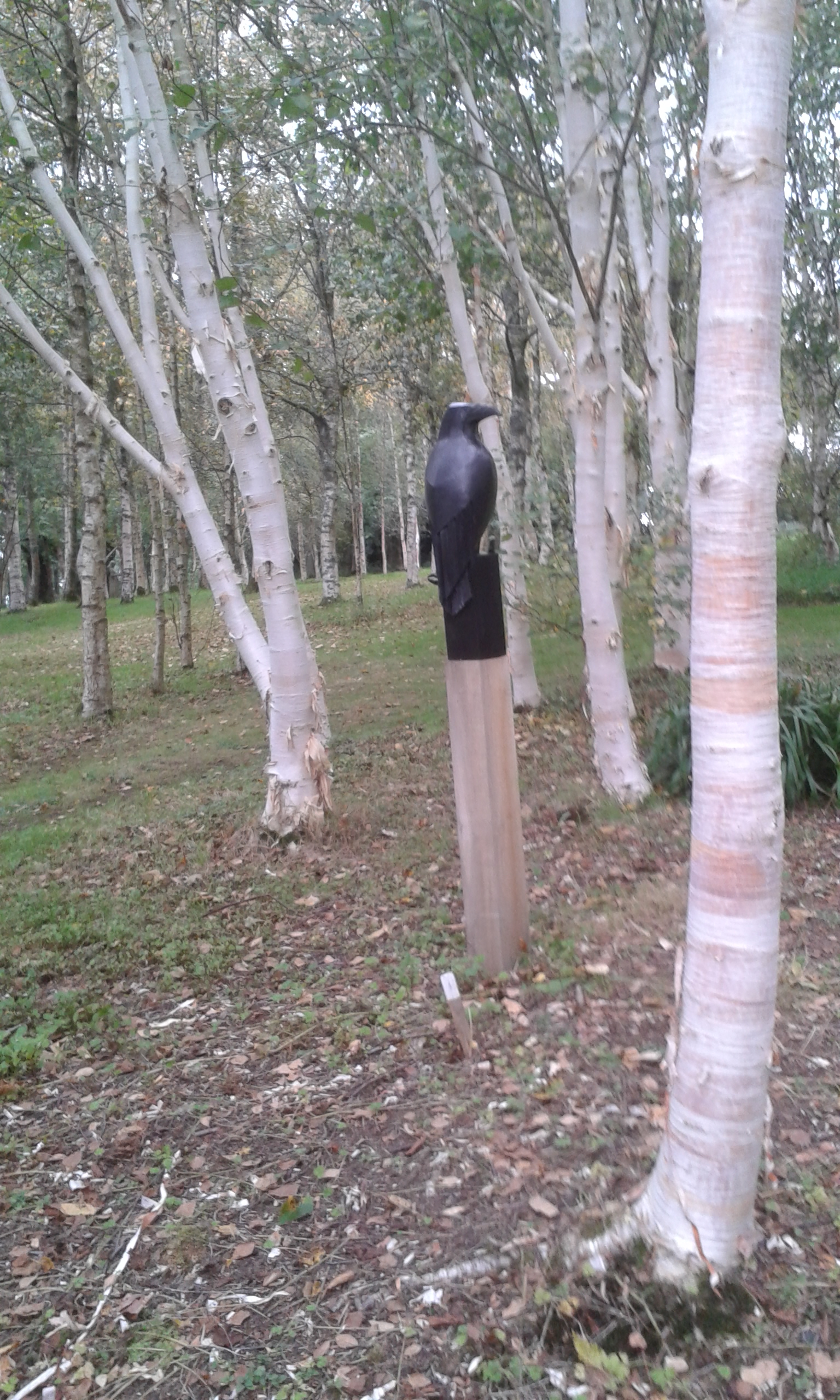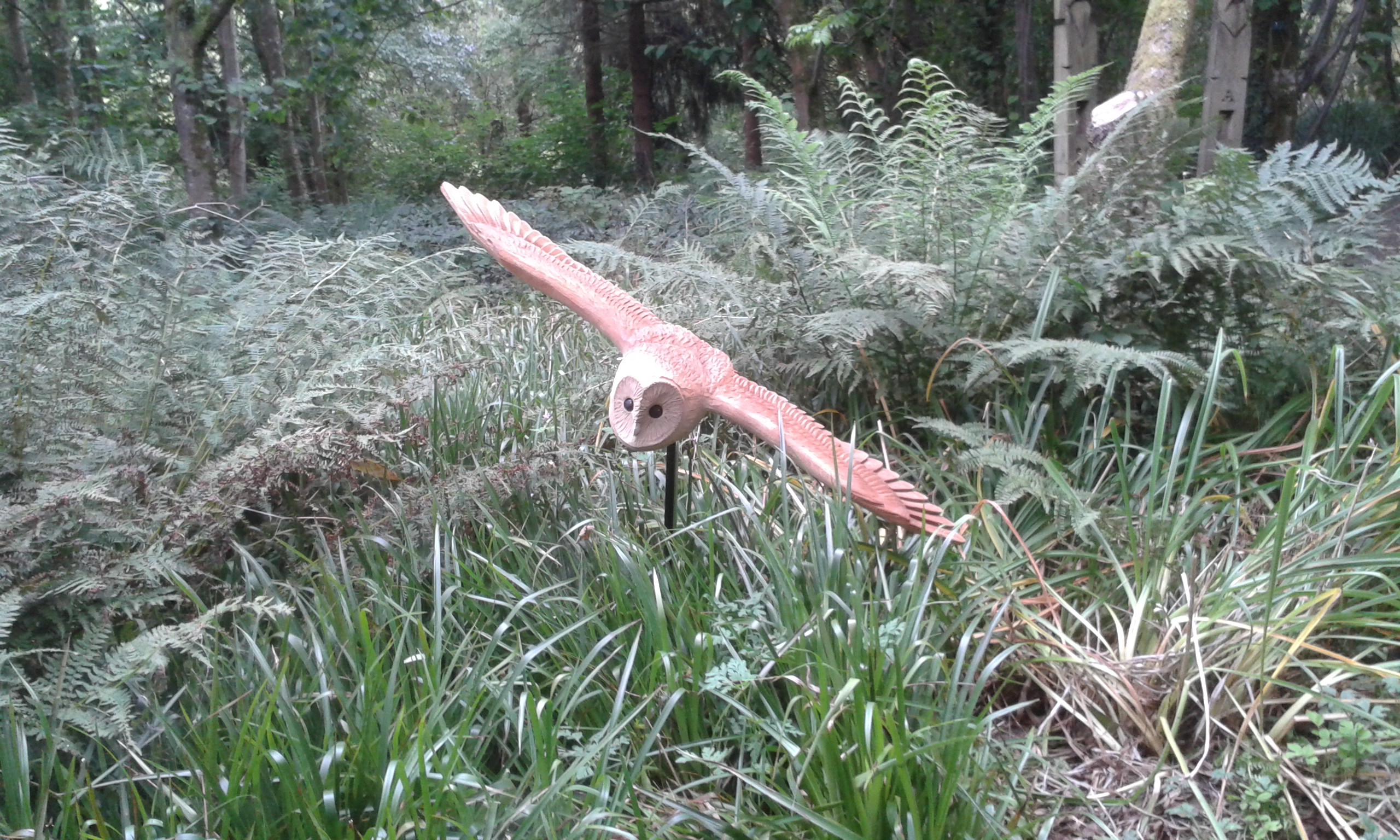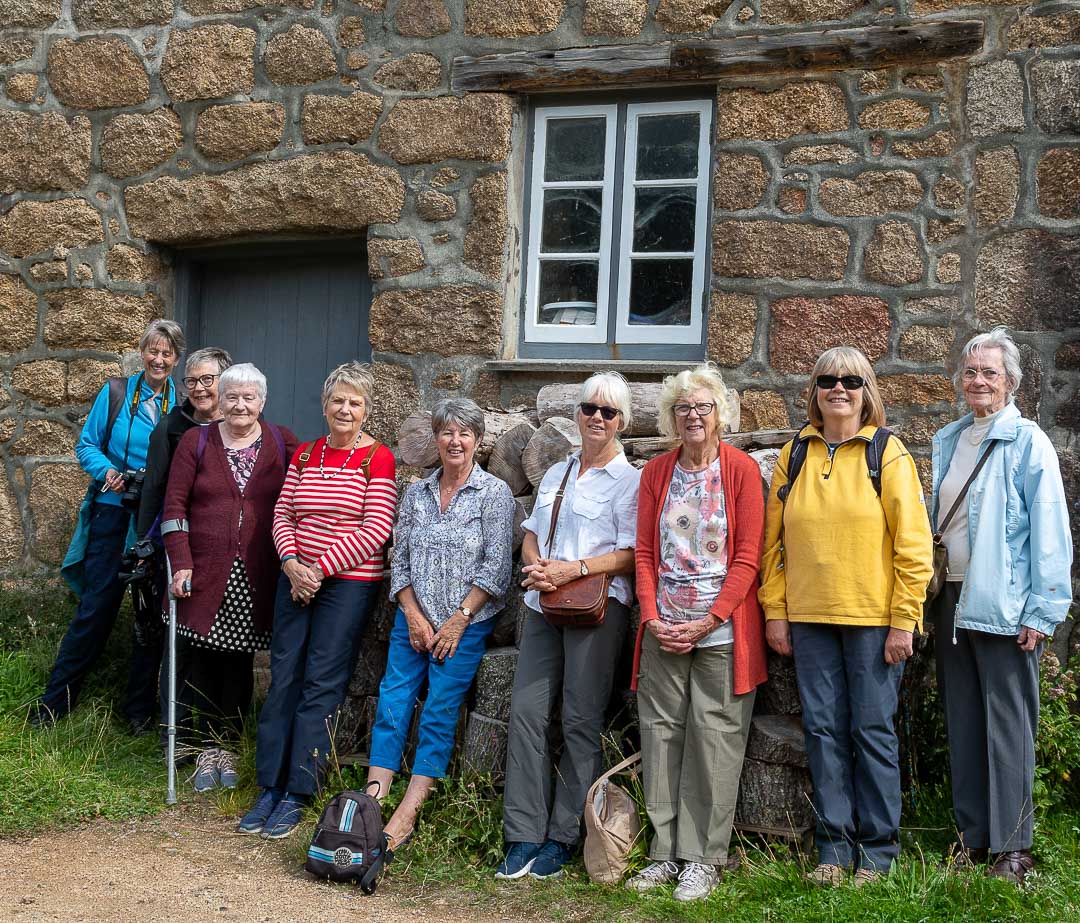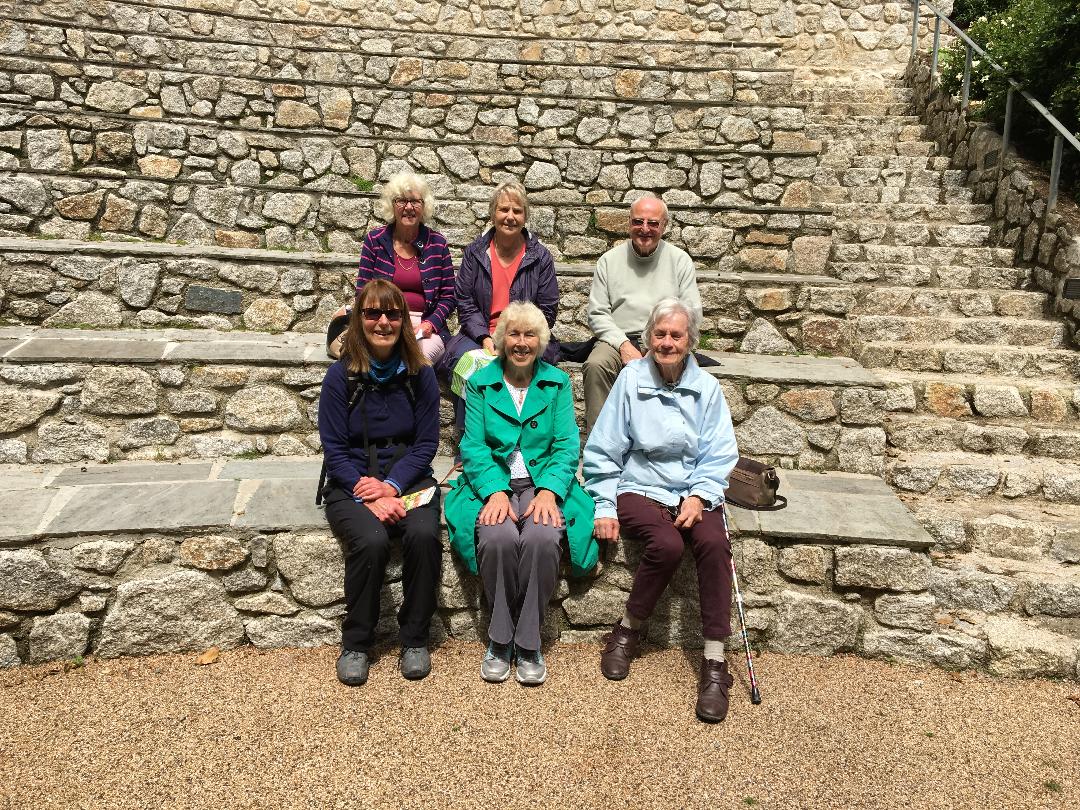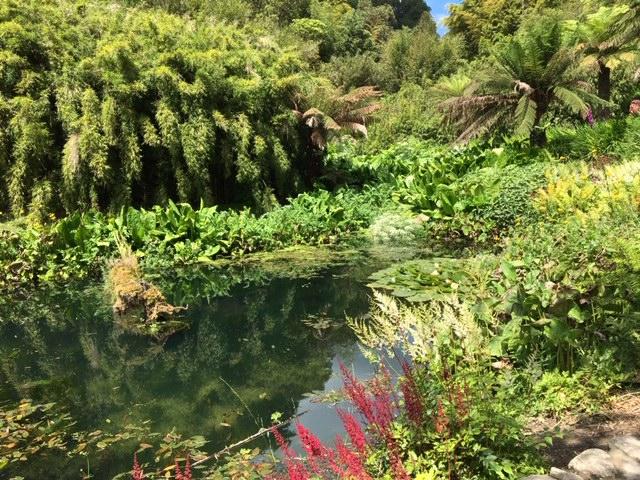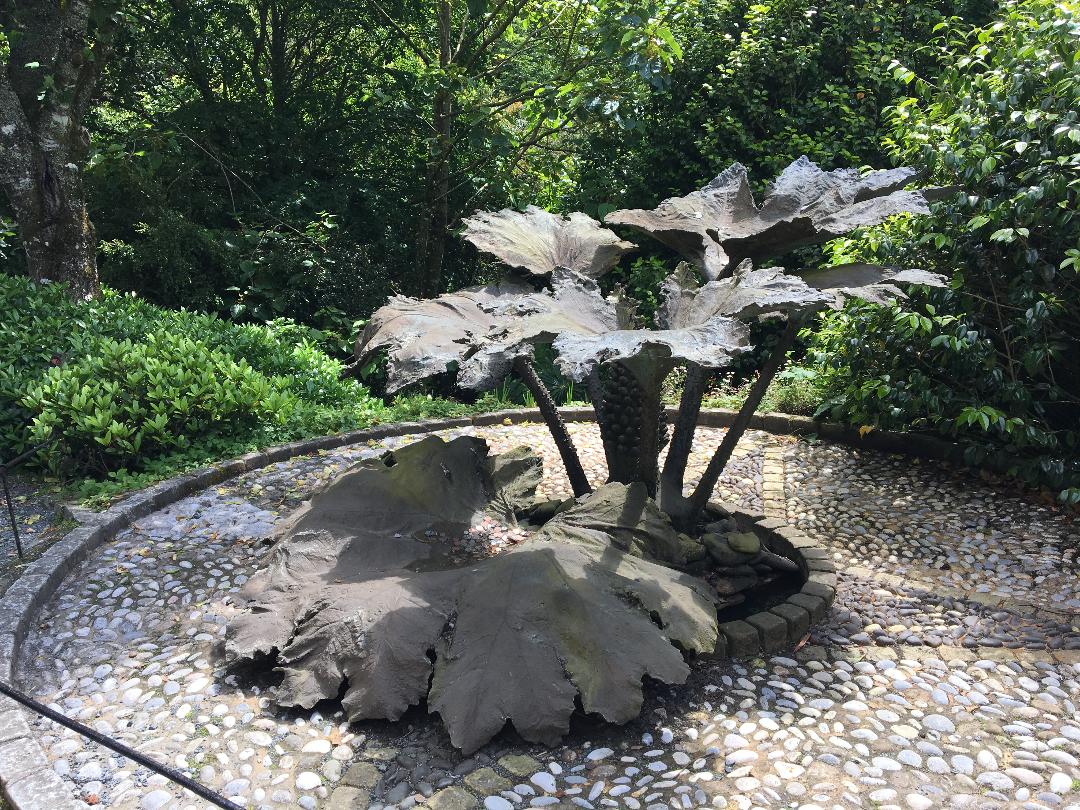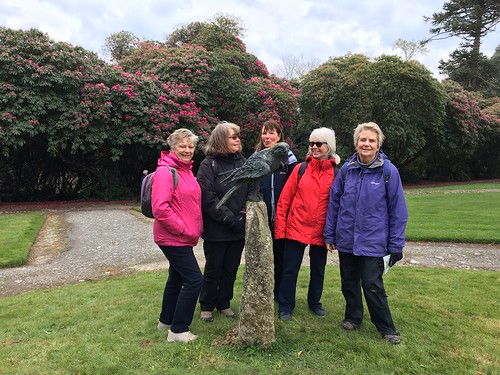 Phone: 01208 871272 Email: annie.singer "AT" talk21"DOT"com Page listing - "Subpage Listing" Planning Meeting We will meet on Monday 11th November 2019 at 10.30am in the Royal Oak Inn, Lostwithiel in order to start planning our 2020 programme. Please come along with all your ideas. 2019 reports REPORT ON GARDENVISIT TO ANDREWS CORNER AND STONE LANE5TH OCTOBER 2019 Four members ignored the weatherforecast and decided to take part in this visit which has been planned to take placelast year but had had to be cancelled due to heavy rain and strong winds. Plus ca change... Andrews Corner is a wonderful garden situated on NorthDartmoor, owned by Robin and Edwina Hill who have lived there for over 40years. Edwina baked some delicious homemade biscuits and Robin gave us a tourof the garden. He is a licensed dormousehandler and has boxes dotted around the garden, including 50 boxes situated inthe valley which form part of a dormice project. The garden is planted with many rare species, includingacers, both small and mature varieties. There are Japanese maple and birchtrees and an unusual hydrangea which has chocolate coloured leaves. Andrews Corner is divided into three levels,the taller trees protecting more vulnerable species from the weather. The garden slopes down to the bottom with abreathtaking view of Dartmoor showing a steep climb up to Cosdon Hill, and theRiver Taw runs along the valley. Duringour visit it did rain heavily but finally the sun came out and we enjoyed theviews across the Moor. We returned to Belstone Village for lunch at the Tors Innand again enjoyed stunning views of North Dartmoor. Stone Lane Garden was our next stop, about 6 miles on theChagford Road, located down a very narrow lane - luckily we didn't meet atractor! We parked in a field at the top and followed the path down throughmature alder and birch trees. A kindvolunteer met us and we were left to explore the 5 acre woodland and watergarden. Kenneth and June Ashburnercreated this intriguing space in the early 1970s. He planted the trees from seeds he had growngathered on his travels. In 1992 Junedecided that the garden would be an ideal place for an exhibition of open airsculptures and 'The Mythic Garden' was born. REPORT ON GARDEN VISIT TO PENBERTH GARDENS AND THE NATIONAL DAHLIA COLLECTION 31ST AUGUST 2019 Click on above image for larger view On our outing westwards we were joined by some members of our u3a photography group. Travelling in several cars, our spirits were dampened by heavy rainfall, but by the time we reached Hayle for a quick coffee stop the rain had also stopped and a sunny day ensued. We reached Penberth gardens just after 11am and met the nursery manager whom we had previously spoken to at Tregrahan Rare Plant Fair earlier this year. He advised a route through the garden which entailed a climb up the steep side of this sheltered valley on rocky paths. We saw many unusual trees and plants associated with a warmer climate, the sky now nearly as bright as the agapanthus! We then followed a gentle path alongside a stream until we came to pretty cottages and the sea at Penberth Cove - and some keen photographers at work! There is a massive capstan here, a large stone slipway and stepping stones over the river, very appealing so not surprising that parts of the recent Poldark television drama was filmed here. However, all 11 members of the group were disappointed that Aiden Turner did not make an appearance! So next, inevitably, round the corner for a rest and super lunch at The Logan Rock, Treen. Turning towards home our next venue was at Longrock, the National Dahlia Collection at Varfell Farm. A total contrast here, an open field of vivid colour. Hundreds of named varieties, some pastels but mostly vibrant contrasts competing for attention, but not an earwig in sight! We saw many different forms of flowers, some dual colours and plants of varied size - something to suit any garden. There was even a large shrub, Dahlia Imperialis. 24 Photos from our visit to the National Dahlia Collection are available on flickr. Click here or on image above. Although our own gardens don't resemble either of these venues, we had learnt a lot and once again came home inspired. REPORT ON GARDEN VISITTO GARDENS COTTAGE, PRIDEAUX 6TH AUGUST 2019 Click on image above for larger view In August, we always visit a garden not too far away fromLostwithiel as we do not want to fight our way through the holiday traffic. This year, we visited Gardens Cottage, a new gardenin the making in Prideaux which opened for the NGS for the first time last yearand Annie had recommended. A big THANK YOUto Janet Dutton which did the research for this visit early in the year when shewas still in good health. The nine memberswho put their faith in an optimistic weather forecast were rewarded with avisit to a very pretty garden which we were able to explore under lovely sunshine. When the owners, Sue and Roger, arrived at the end of 2014,the land was a mixture of mown meadow and rough woodland. Theirvision was to create a country garden which is sympathetic to its surroundinglandscape, has year-round interest, lots of colour and simply feels good to bein. They have certainly achieved all this. When we were having afternoon tea at the end ofthe day by the terraces and rockery, none of us wanted to leave and we could havestayed for supper, had this been on offer! This garden looks much older than it is, thanks to its maturetrees and the beautiful red brick wall which separates it from PrideauxHouse. In this wall, you can see a gate whichis the shortcut that the gardener who lived in the property used to take to getto his job at “the big house”. As soon as we walked into the garden, we saw the most recentadditions to the garden: the dry-stone musicsculpture, complete with a treble clef as well as a peace cairn built by Roger,an idea copied from Pinsla garden. There are many areas to explore in this beautiful garden andthis is what we did in pairs and groups:
**************** REPORT ON VISIT TO KEN CARO FRIDAY 12TH JULY 2019 Thirteen members of the group made their way to Ken Caro for a visit organised by Gill Forster and Carol Baker - a big THANK YOU to them both. Ken Caro, near St Ive, Liskeard, is a connoisseurs' 10- acre garden full of interest all year round. There are lily ponds, panoramic views (see our group photos) , plenty of seating, picnic area etc. In July, the vast collection of day lilies are in full bloom. There is also a woodland walk which has one of the largest beech trees. There is a good collection of yellow magnolias, herbaceous plants as well as a large collection of hydrangeas. Mr Willcock gave us an introductory talk before we set off in pairs and groups around the garden. Mrs Willcock made tea which we had in the summer house to accompany the cakes and sandwiches generously provided by Gill Forster. It was an enjoyable afternoon spent in a garden which is not far from Lostwithiel but which so few of us had been to before. WEDNESDAY 19TH JULY 2019 Five of us set off from Lostwithiel in light rain and arrived at Trebah in glorious sunshine so raincoats etc were soon discarded. When we had met Malcolm, we set off to explore this wonderful garden. Our route took us down past the amphitheatre to the beach where an ice cream had to be eaten. The Hydrangea Valley was just coming into flower so will look even better in the next few weeks. Everything was superb and the gunnera, Jenny’s pet hate, were enormous. I include the metal gunnera sculpture just for her! The layout and planting are excellent with a stream winding down the valley. Of course, the cafe was sampled for lunch and all pronounced it very good. Another visit at a different time of year would be most welcome. REPORT ON VISIT TO RARE PLANT SALE IN TREGREHAN SUNDAY 2ND JUNE 2019 Five members met at Tregrehan for the Rare Plant Fair which included stands by local nurseries Proper Plants and Hidden Valley. It was well set out with a wide selection of plants and lots of information for gardeners. Penberth were there with a good range and we look forward to our trip to their West Cornwall gardens in September. Three of us continued on an exploration of Tregrehan's own garden and 50mt long greenhouses, also enjoying the woodland walks with most of the trees ( some over 150yrs old ) having name labels. A number of them having the honour of being listed as Champion Trees on the 'Tree Register' at Kew. We also came across the grave-stones of two of the Carlyon family in the woods. We rounded off our visit with - you guessed! - delicious home made cakes and tea. REPORT ON VISIT TO THE WOODLAND GARDENS AT TREBARTHA ON 12TH MAY
Eight members had signed up for this visit but in the end only five were able to take part in it. It is really a shame that not more members were involved as the woodland gardens are stunning. Trebartha in the hamlet of Trebartha just outside North Hill appears in the 1086 Domesday Book. The property was purchased in 1941 by the current owners, the Latham Family. The garden was open on 12th May for the National Garden Scheme. The name is derived from two old Cornish words: “Tre” - house or homestead and “Bartha” – stream or fountain. It is easy to see why: a stretch of the river Lynher known as the Ladies Mile flows through the property. The whole walk through the woodland gardens takes a good two hours as there is much to see:
We finished a most enjoyable visit with tea and cake. 17 photos of the gardens available in this Flickr Album ************************ REPORT ON VISIT TO TREGOTHNAN Sunday 14th April 2019
Twelve members of the group met up at the Community Centre Car park at 9.00am to travel to Tregothnan by the Lerryn Area minibus. It was a cold, overcast and blustery April morning and we had had to wrap very warmly, retrieving from our respective wardrobes clothes that we had put away until next winter! Click on above image for larger view There is much of interest to see in the garden:
There are several viewpoints at the edge of the garden and several seats with beautiful vistas but today was not the day to stop moving for very long. We enjoyed our refreshments in the courtyard but after three hours we were ready to leave as the weather had not warmed up. It was the first visit Tregothnan for all but one member and despite the disappointing weather, the visit was enjoyed by everybody.
Click on image above to see slide-show If you have difficulty in viewing slide show then pictures may be viewed in this flick album
REPORT ON GARDEN VISIT TO BODMIN NURSERIES MONDAY 25TH MARCH 2019
Fourteen of us met up at Bodmin Nurseries for a one-hour guided tour by owner Mark. The nursery stand on the site of the Laveddon Mill, a water mill dating from the 17th Century. The remaining building is Grade ii listed. Although the mill was part of the Lansallos Estate, it was autonomous. It was a gristmill producing animal feed and there were other industries on the site (sawmill etc.). Milling took place until the early 1920s. In the 60s-70s, the site had become a hub for people growing and selling vegetables. There has a been a plant nursery on the site for 50 years and Linda and Mark have been running it for 19 years. This nursery is 90% self-sustained, employs 44 people, including the staff in the café which opened 6 years ago and continues to expand. The nursery has its own water supply which is rich in nutrients, thus reducing the need to use fertilisers, and it generates 60% of the electricity it uses. Mark’s passion and vision for his work was very much in evidence throughout the talk. He is proud of his reputation as a grower. His moto is “knowledgeable staff” and “fresh plants”. We spent some time in one of the greenhouses and Mark explained how they operate as robots. He also gave an overview of the conditions which underpin a successful process from sowing seeds to hardening plants (right temperature including temperature difference between the root of the plant and the ambient temperature, use of good bacteria, appropriate watering etc) Here are some of the facts and figures that we learnt:
The nursery charged £30 for the whole group and the money will be donated to the Bodmin Hospital. We had our customary refreshments in the Mill Cafe after the guided tour and, as the weather was so glorious, we sat on the patio area. There was also time to do some shopping. We look forward to our next visit to the Nurseries which will have a specific focus. It could be a focus on composting or on making hanging baskets. We will decide at our October planning meeting.
********************************** REPORT ON GARDEN VISIT OF 11TH FEBRUARY 2019 SNOWDROPS OF HIDDEN VALLEY GARDENS
The group had already visited this local garden two years ago in the summer, but we had selected it again as our snowdrops garden to kick start our 2019 programme of visits. It was a disappointing start: five members had signed up for this visit but in the end only three of us turned up at the Lostwithiel Community Centre car park to travel to the garden. What a shame as the visit turned out to be an absolute treat with so many different varieties of snowdrops still in bloom. We were also blessed with lovely sunny weather. Nationally there are about 2000 different varieties of snowdrops and Tricia has 150 of them in her garden. Tricia had just come back from a snowdrops fair in Somerset where she had purchased more varieties of snowdrops and, as they were still in their pots on a table, we were able to examine each in detail, observing their individual features. We looked through the Avon Bulbs catalogue recommended by Tricia (other catalogues are available!) and were surprised to see the price reached by the snowdrop bulbs: up to £120 per bulb! However, we were informed that bulbs can fetch as much as £750. 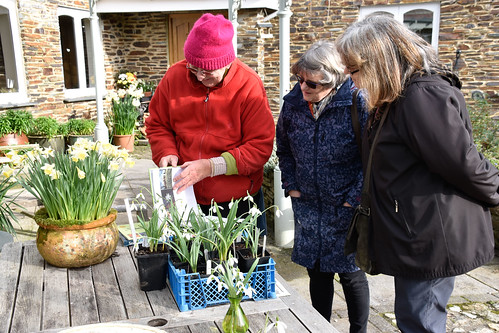 Tricia then gave us a guided tour of her garden when we saw her beautiful snowdrops blooming in flower beds, under trees and in the fernery. 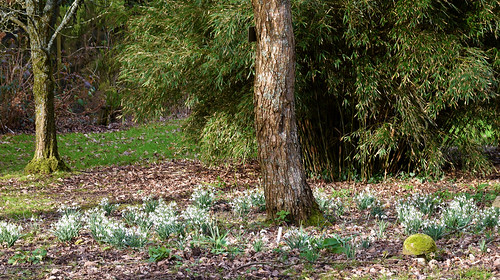 Here are some facts about snowdrops:
A good time to split them is after they have flowered and they start dying back. This method is often used for snowdrops (Galanthus) and snowflakes (Leucojum) as they do not re-establish well when planted as dry bulbs:
 So, which were my favourite snowdrops? It is difficult to say as they are all so interesting but here are my top three:
We bought snowdrop bulbs (the highest price was £10), gave Tricia a donation for the charity MIND and drove back to Lostwithiel where we stopped at the Q café for afternoon tea/coffee and cake.  |

